Gaming
The Rise And Fall of SEGA: What The Heck Happened to Them?
Published
3 years agoon
By
Akilah S
What first comes to mind when you think of Sega? Is it their old arcade games from the 60s and 70s? Their home consoles? Or is it the absolute masterpiece that was Micheal Jackson’s Moonwalker?
Chances are, your answer was “none of the above.” Instead, your answer probably involved a well-known hedgehog by the name of Sonic. Of course, everyone knows of their titular mascot. He’s the fast, fun-loving, blue ball of fur. Best known for collecting power-up rings, and defeating the notorious Eggman. But there’s more to this company than meets the eye. The story of SEGA is one of short-lived prosperity, uncharted potential, and a surprising loss of opportunity.
As much of a fan we are of Sonic, one has to wonder why SEGA isn’t known for more. To answer that question, we gotta take it back to the very beginning. This is the rise and fall of SEGA.
How it All Started
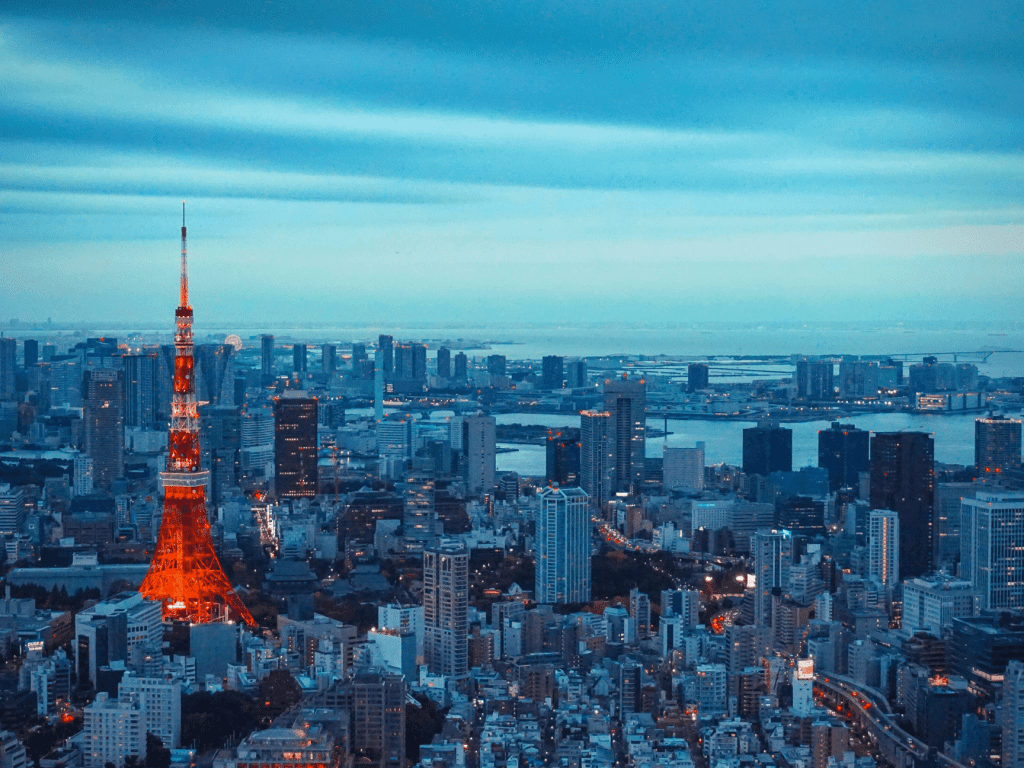
Surprisingly enough, SEGA started out as two different companies. Companies that didn’t even focus on video games. You see, in 1940 there was this small company located in Hawaii, called Service Games. They were best known at the time for selling slot machines and jukeboxes for the American soldiers. Soon enough the company relocated to Tokyo, Japan.
It was there when they met with another small American company, Rosen Enterprises. They ended up merging together, and forming SEGA Enterprises. The cool thing about this name is that SEGA is derived from the first two letters of each word in “Service Games.”
SEGA mainly operated in Japan but they also had headquarters set up overseas. Most notably, they had an American establishment. Throughout the 1960s, SEGA began to create their own arcade machines that were relatively successful. Expensive, but still proving to be popular.
Growing Tensions
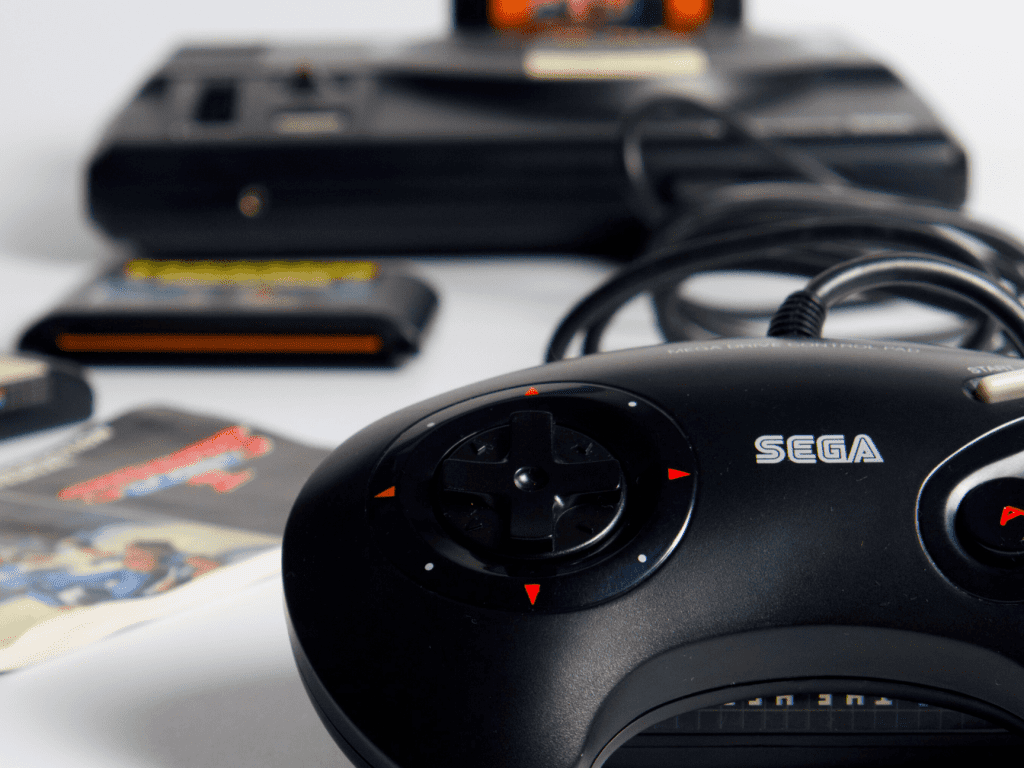
As technology evolved, so did the company itself. In the 1970s, they generated a plethora of successful arcade games. Soon enough, SEGA wanted to dip its toes into the world of home consoles. This is where they started to face some trouble. You see, by the 1980s, the home counseling industry was crazily oversaturated. It was very hard for them to compete.
And still, with all of the competition amongst game consoles, there was one that stood on top. And you know it wasn’t SEGA. It was Nintendo. Nintendo was the main shareholder when it came to the video game consoles in the 1980s. For a long time, it has dominated the market. And for a while, SEGA wanted to create something that could compete with them.
Add even more fuel to the fire, Nintendo and Sega once released a new console same day. Though of course Nintendo’s gained much more success. Continuing to develop technology and games, SEGA experimented with multiple mascots that could potentially rival Mario.
Nothing truly stuck until they created what’s known in America as the SEGA Genesis. Probably their most successful gaming counsel to date. The SEGA Genesis was moderately successful at the time, though still didn’t sell too well.
SEGA realized that they had to bring something totally different and out there to rival other counsels. Something that would change the scope of their company forever.
Introducing: Sonic The Hedgehog
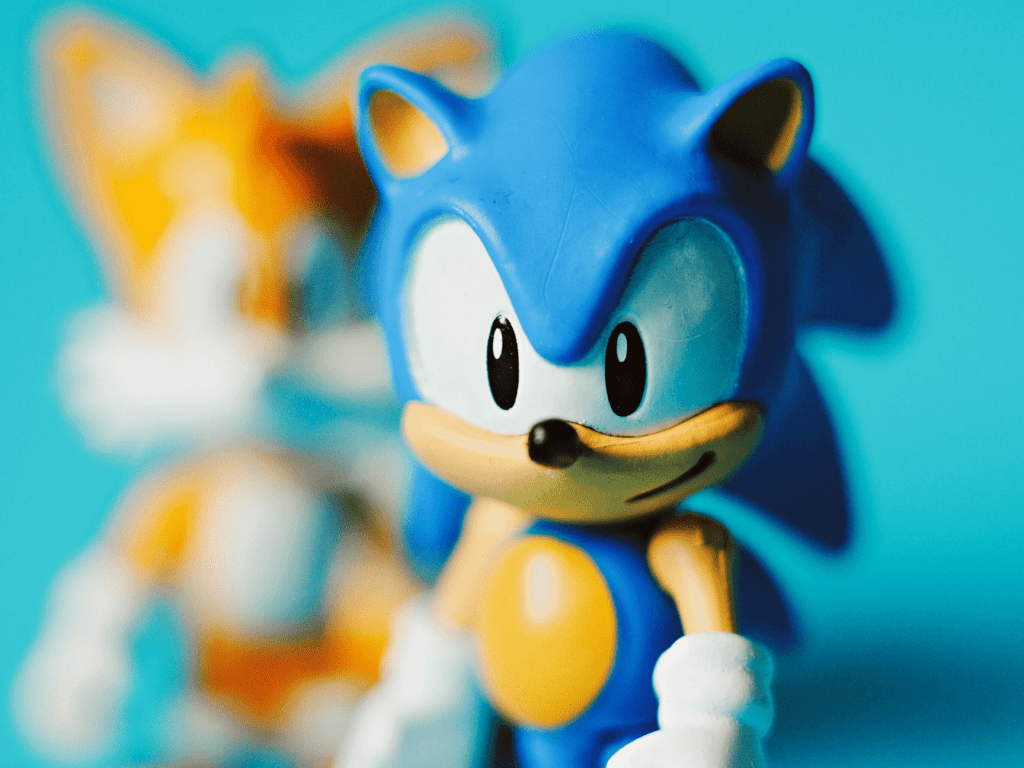
The original Sonic the Hedgehog is a platformer game, released in 1991. Though to understand how we got here, we must take it back to 1988. Remember when I said that Sega was in the interest of creating a character to rival Mario? Yeah well, this process went on for 3 years. And that’s where Sonic came in.
Sonic was created by Naoto Ohshima. His idea prevailed against the slew of suggestions involving armadillos, kangaroos, and squirrels. Basically, they wanted to create an iconic character, among the likes of Mickey Mouse.
Meanwhile, SEGA America was desperate to find a way to give it’s brand a leg up. They contacted Tom Kalinske; a well-known figure who’s worked in the toy industry, and knew quite a bit about product branding.
When offered the position as the new president of the American division, Kalinske was promised to have full control. He was to do whatever he wanted with SEGA America.
Now from my perspective, that sounds like a cool ass deal. I mean, the control freak in me LOVES the idea of power over everything. So of course Kalinske took the freaking deal. I would too. And once he got on board he made a total of 4 suggestions.
First, he wanted to throw out the current game that came with SEGA Genesis, and replace it with Sonic the Hedgehog. Then, he wanted to lower the price of the system overall. He wanted SEGA to rebrand itself as hip, cool, and edgy. And he wanted to create games that resonated with a western audience.
When Sega Japan got ahold of these requests, they HATEDit. Though reluctantly, they went through it with Kalinske’s plan.
Sonic was marketed to be the punkish rival to the goody-two-shoes Mario. And boy, did it work. Sonic is what games Sega its name. The company blew up with this new marketing strategy and its unique character. The Sega Genesis blasted its way into the mainstream gaming industry. Just as they wanted.
Of course, we wouldn’t be here today if things didn’t go astray. Unfortunately, things didn’t stay all that great for SEGA.
The Fall of SEGA

As technology continued to evolve, SEGA tried to evolve with it. They released numerous experimental projects, including the SEGA CD and the Game Gear. Most notoriously however, SEGA was very excited about releasing their newest console, the SEGA Saturn.
Perhaps the biggest setback what’s the constant head-butting between SEGA America and SEGA Japan. Back in America, Kalinske wanted to collaborate with other companies to improve on Sega Saturn. But SEGA Japan wasn’t really having it. They turned down multiple collaborations that would ultimately provide the hardware needed for a successful consolel release. Kalinske pushed for in offer with Sony. Show me wanted to manufacture a piece of Hardware with SEGA, and then proceeding to create games in collaboration with each other.
SEGA Japan, however, was stubborn. They had the idea for Sega Saturn, and they were sticking to that. Such a shame, really, because what Sony was creating ended up becoming known as the PlayStation.
SEGA vs. PlayStation

So, around the time of Sega Saturn, they were facing some pretty big, competition. In the American Market PlayStation was also advertising itself as edgy and cool. Only this time it was made worse considering the fact that PlayStations were targeted at older people rather than kids. This meant that they could advertise with munch raunchier content.
On May 11th, 1995, SEGA made a mistake at a Los Angeles video game conference. They excitedly announced the release of the Sega Saturn for $399. It was already on shelves, while the upcoming juggernaut that was PlayStation was still in the works.
What they didn’t think about was the fact that PlayStation executives had yet to make a speech. So, once SEGA got off stage, Sony was up next. The Sony spokesperson simply walked up on stage, and said this before immediately walking off;
“$299.”
In a way, SEGA never quite recovered from that ultimate diss. Yeah, it may sound like just a funny one off situation, but this is what set the gears in motion for PlayStation’s success. Due to the console not releasing just yet, they were able to build up hype and momentum. They also focused on tweaking their games and software so that it could compete with SEGA Saturn.
Safe to say, the gaming console which SEGA was so excited for flopped. And they missed a huge opportunity to work with Sony on developing the PlayStation. Not too long after this situation, Kalinske decided to step down. I would too, Kalinske. I get it.
It had a few other projects since then, such as the Dreamcast. But ultimately, they were not able to rival their competitors.
Current Times
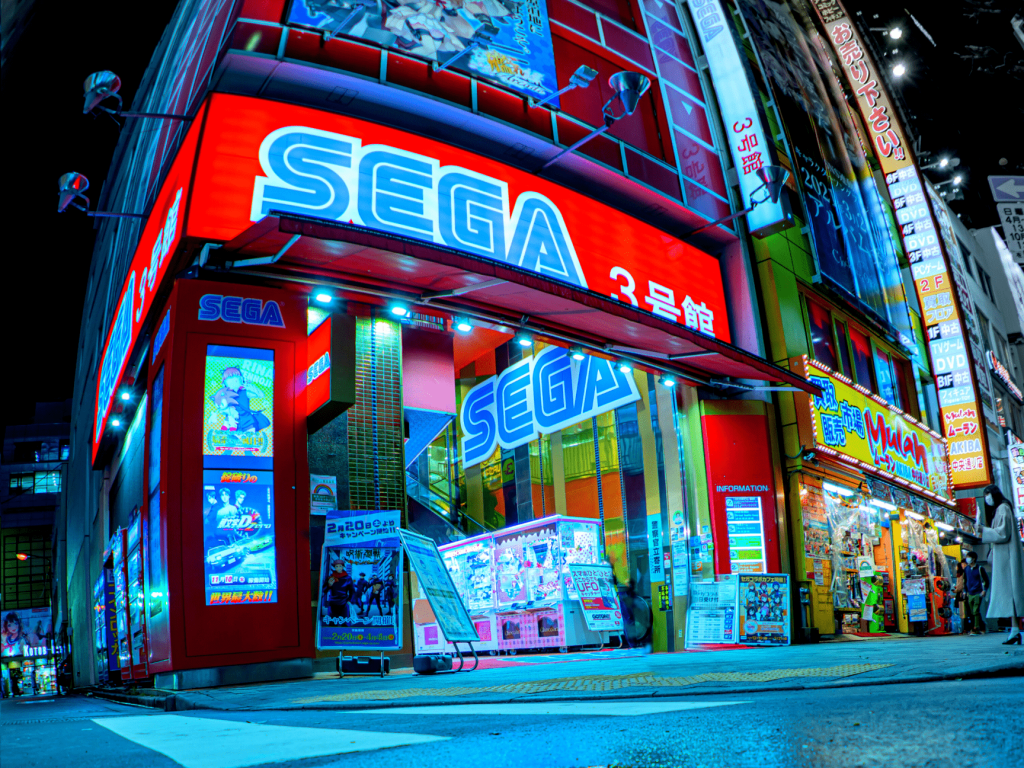
As of 2022, SEGA is known for producing video games. And that’s about it. No more consoles, and no more trying to outdo competitors. Instead they focus on their Flagship character Sonic the Hedgehog. They create games for many different platforms, including the Nintendo switch.
Sonic has honestly taken on a life of his own. He makes up the majority of SEGA revenue, with a long history of video games, comics, and even TV shows. Hell, SEGA was even willing to collaborate with Nintendo on multiple occasions. Anyone remember those Sonic and Mario games for the Wii? Cause that was the ultimate cross-over of my childhood.
Contrary to normal rise and fall stories, SEGA is still around and still achieving success in the industry. It’s just not what they were originally going for. And you know what? That might be fine for them. Rumor has it that SEGA Japan has a new console in the works. If these words are true, SEGA we’ll have a massive fan base ready for their return.
You may like
Gaming
10 Best 2024 Video Games Every Gamer Will Love
Published
11 months agoon
July 11, 2024By
Kai Kelis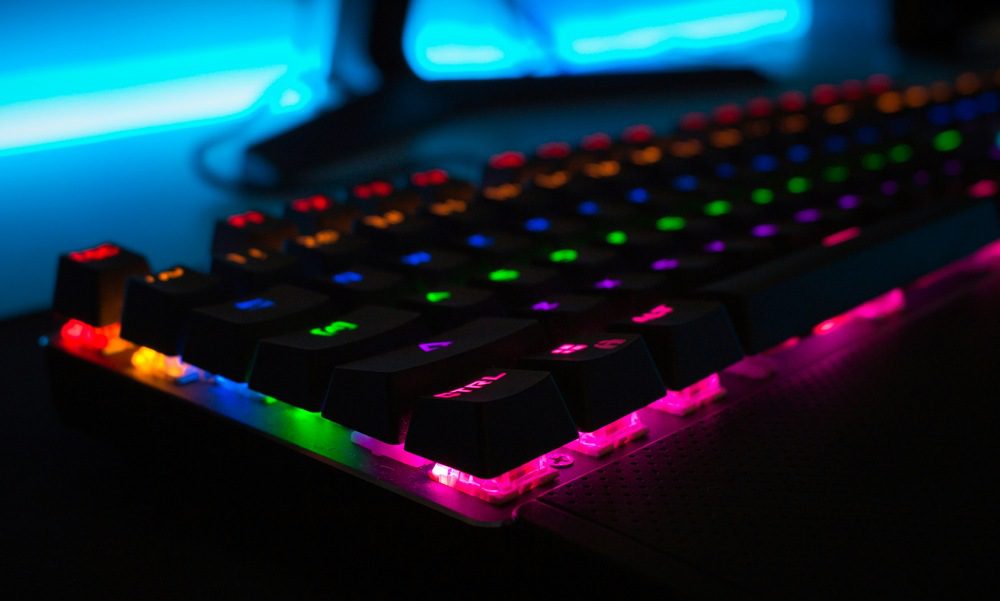
The gaming industry revenue is projected to hit the US$ 282 billion mark this year. It is expected to have a growth rate of 8.76 percent from 2024 to 2027 yearly. And this is why gaming manufacturers and companies are scrambling to create new games and continuously update current ones. Professional gamer or not, here are the top 10 2024 video games you must try.
1. Sons of the Forest

If you’re into horror movies, maybe playing one of the characters in this survival horror game will excite you. Sons of the Forest isn’t for the faint of hearts. Developed by Endnight Games, it’s the sequel of the “The Forest,” a 2014 video game. This game’s setting is on an island overpowered by cannibals. It centers on a protagonist stranded on an island and has to fend off himself from cannibals. The players can build their weapons and shelters for their survival.
2. Ultros
Ultros is about a space traveler who suddenly wakes up on a spaceship. The spaceship, called Sarcophagus, imprisons the demon Ultros. Since the ship has been overgrown with plants and inhabited by aliens, players must interact with both to stay alive. But the main goal is to prevent Ultros from waking up. Players must increase their skills by eating plants and killing aliens who have gone mad and are not the ship’s bosses.
3. Helldivers 2
Developed by Arrowhead Game Studios, Helldivers 2 is for gamers who are into third-party shooter games. This is one of the newest 2024 video games, released on February 8, 2024, for Windows and PlayStation 5. Since its release, it became the fastest-selling game of all time, hitting 12 million units in sales during the initial 12 weeks. It revolves around using “strategems,” referring to sentry guns, cluster bombs, shield generators, and supply pods. Players must complete missions and reach game objectives to earn awards, war-bond medals, and requisition slips.
4. Like a Dragon
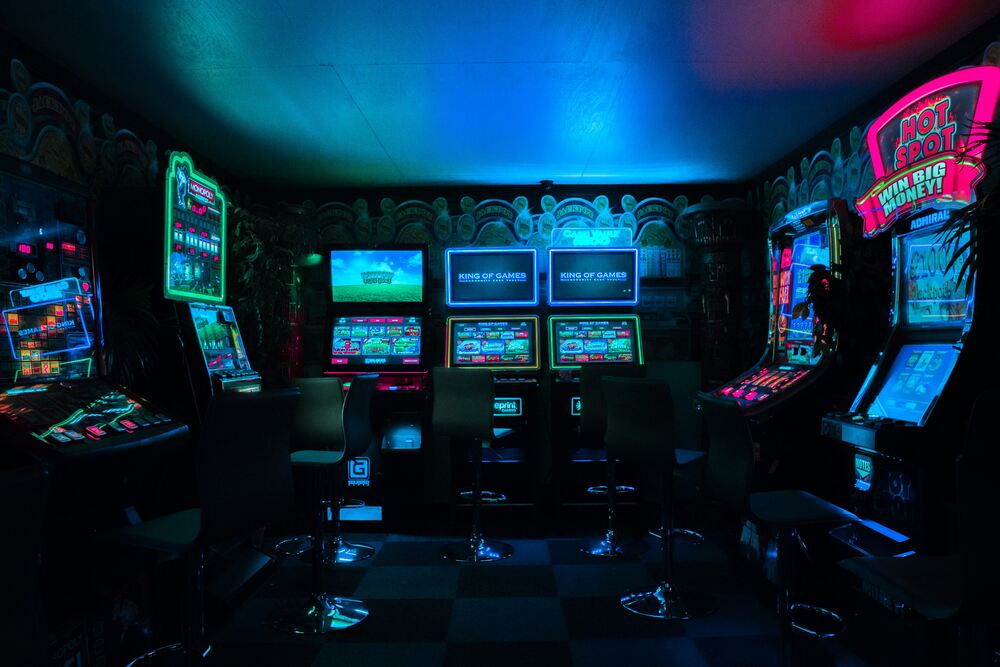
Here’s a humorous combat JRPG game for chill gamers. Developed by Ryu Ga Gotoku Studio, players control Ichiban Kasuga and Kazuma Kiryu, exploring Yokohama’s Isezaki Ijincho district, Honolulu City in Hawaii, and Kamurochō. The game uses an enhanced turn-based combat system, the “Live Command RPG” Battle System, where characters move freely, impacting combat flow. Positioning enables special attacks and team-ups. The game introduces a Hype Meter for powerful team attacks and a Smackdown mode to skip weaker fights. The Poundmates summon system returns, allowing supporting characters to join battles directly.
5. Prince of Persia
Prince of Persia is a Metroidvania game based on an action fantasy movie directed by Mike Newell in 2010. It centers on the multiple incarnations of the Prince in medieval Persia. Jaffar seizes power and locks the Sultan’s daughter in a tower. The protagonist of the game is the Prince whom the Princess loves. The player must rescue the Princess and let her out of the tower by defeating Jaffar within 60 minutes.
6. WWE 2K24
If you like wrestling, the WWE 2K24 is for you. It’s a video game series based on the WWE and is the 10th game under WWE 2K. Released on March 8, 2024, the WWE 2K24 is the newest wrestling video game with new features, improved graphics, and better overall gaming experience. Unfortunately, it drew flak from gamers due to its “incremental improvements” over its predecessor, WWE 2K23. However, you’ll still enjoy arcade and simulation wrestling gameplay. Gimmick matches, such as a casket, ambulance, gauntlet, and a special guest referee, are present within the game. The Backstage Brawl is also updated with new diverse weapons and four-player multiplayer.
7. Balatro
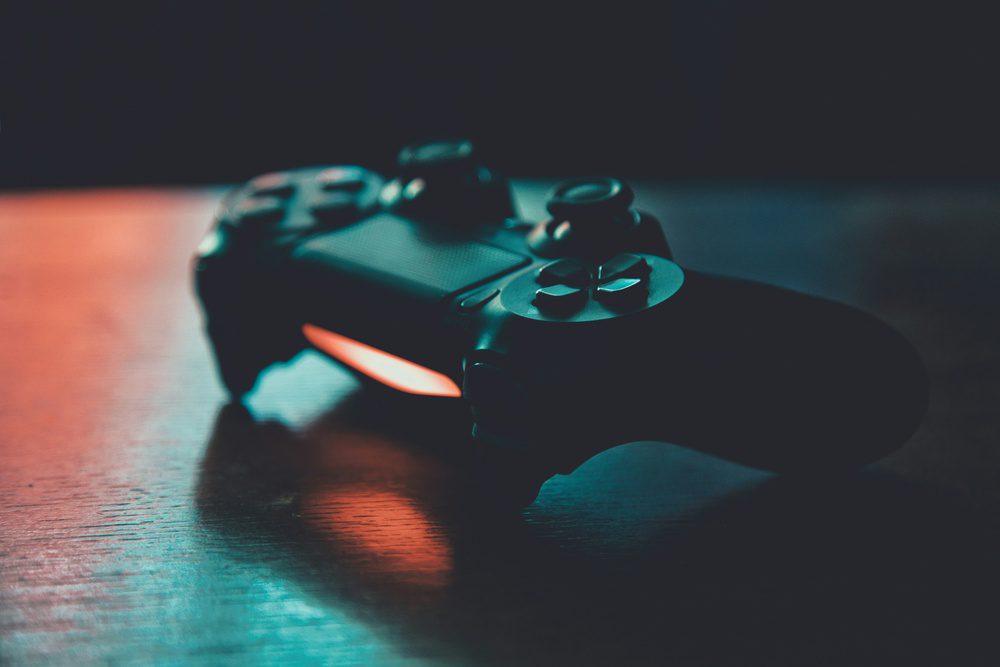
If you have a knack for numbers and strategy, Balatro is the roguelike deck-building poker-themed video game for you. Released on February 20, 2024, Balatro is on the Xbox One, Xbox Series X/S, PlayStation 4, PlayStation 5, and Microsoft Windows. It follows poker rules wherein you must defeat “blinds” and improve your deck. The overall goal is to win all 8 “antes.”
8. Hades II
Hades II is the sequel to the famous roguelike dungeon crawler game Hades in 2020. Hades II was released in early May of 2024. The successor is set in the same universe as the first Hades game, with the story revolving around the Princess of the Underworld, Melinoë. She is also the sister of the Zagreus, the protagonist of the first Hades game. The game centers on Melinoë and her mentor, Hecate. Both, with Melinoë as the star of the game, must defeat the god of time, Chronos.
9. Final Fantasy VII Rebirth
This is one of the most popular RPG games, and it is a sequel to Final Fantasy VII Remake, released in 2020. This video game is for you if you’re looking for real-time action. Players can be one of the characters belonging to the eco-terrorist group called Avalanche. The goal is to prevent Shinra from exploiting the “Lifestream.” They must also defeat Sephiroth, the former elite soldier.
10. Dragon’s Dogma 2
Dragon’s Dogma 2 is an action RPG where players control the “Arisen,” a hero marked by a dragon. Players explore, undertake quests, and battle monsters while navigating a geopolitical conflict between two kingdoms. AI-controlled allies aid the Arisen called “Pawns.” Players can customize their avatars and Pawns, choosing from various “vocations” or classes with unique abilities. The game introduces new hybrid vocations like Mystic Spearhand and Trickster. Additionally, players can recruit additional Pawns created by other players to enhance their party.
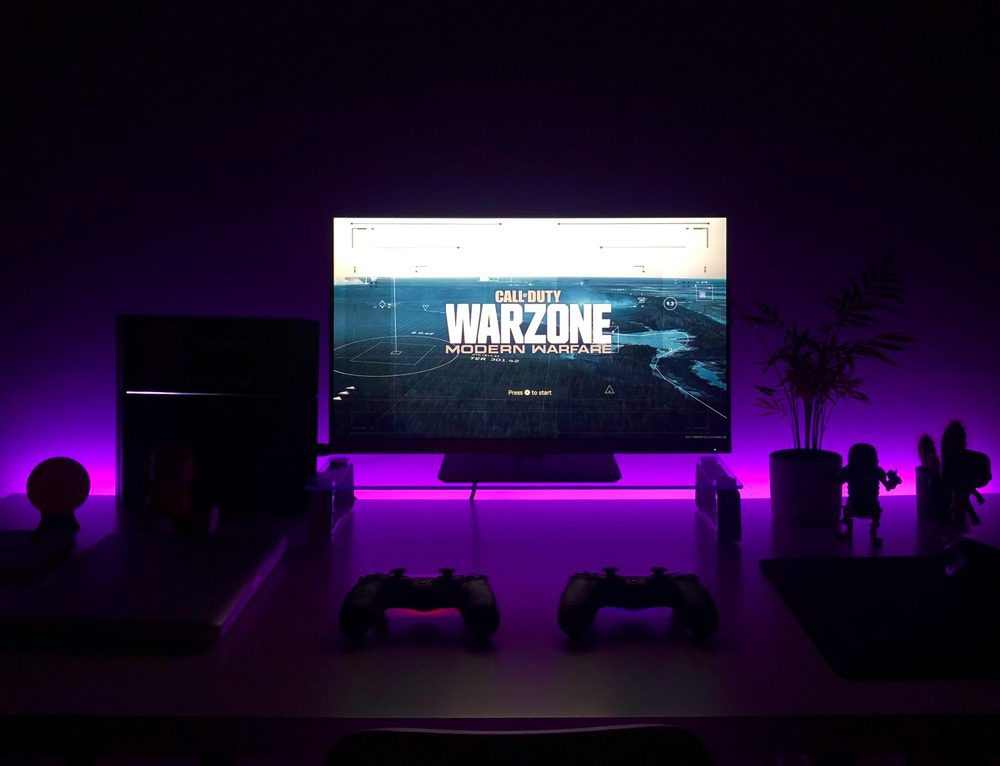
Haven’t found the right handheld gaming device? You’ve come to the right place. We’re sharing 10 best handheld gaming devices to get you those wins!
1. Valve Steam Deck
The Valve Steam Deck is a powerful handheld gaming device that excels at running modern PC games and emulating retro games with a customizable UI and sturdy build. Its cons include a bulky design, limited compatibility with some Steam games without tweaks, and a single USB-C port. It supports TV and monitor connections through a dock, starting at $399 for the LCD model and $549 for the OLED version.
2. ASUS ROG Ally
This handheld gaming device offers powerful performance with its AMD Ryzen Z1 Extreme processor, a 1080p display that comes with a 120Hz refresh rate, and Windows 11 for extensive game compatibility. While it boasts excellent build quality, a polished UI, and punchy speakers, it can run hot and lacks a carrying case. Priced at $699, it is more expensive than some competitors and has potential issues with button quality and battery life.
3. Ayaneo 2
The Ayaneo 2 is a premium handheld gaming PC with a high build quality, 1200p bezel-less display, and hall effect joysticks. It features an AMD Ryzen 7 6800U processor and supports eGPUs for enhanced performance. While its ergonomic design ensures comfortable play, it is more expensive than other handhelds, starting at $1,099. Despite its higher price, it outperforms many competitors, including the Steam Deck, in various aspects.
4. Nintendo Switch OLED
The Nintendo Switch OLED features a vibrant OLED display, an extensive game library, and versatile docked/handheld modes. While it lacks the power of PC-based handhelds and 4K capabilities, it retains the excellent features and game library of the original Switch. Its beautiful screen and functional upgrades make it appealing despite its 720p resolution and aging hardware compared to newer consoles. Priced at $349.99, it offers excellent value.
5. Ayaneo Geek
This device offers performance similar to the Ayaneo 2 at a lower price, starting at $949. It features customizable RAM and storage options but has a lower resolution and uses PCIe 3.0 instead of 4.0. This Ryzen 7 7840U handheld gaming PC is designed for comfort and functionality, with hall effect triggers, configurable macro buttons, and dual USB Type-C ports, including one with USB 4 support.
6. iPad Pro
The iPad Pro (2022) features a powerful M2 chip, an excellent display, and versatile functionality for non-gaming tasks, making it ideal for productivity and media creation. However, it’s costly and not optimized for traditional gaming controls, and additional accessories can quickly add to the cost. Starting around $799, it offers laptop-level performance, ProRes video support, and capable cameras, but its high price and the limitations of iPadOS are notable drawbacks.
7. Lenovo Legion Go
The Lenovo Legion Go boasts an 8.8-inch 2K display and detachable controllers, delivering a solid Windows gaming experience. It is excellent for indie and home gaming but is larger and heavier than most handhelds, making it less portable. Additionally, its native resolution is often underutilized in games. Priced between $699 and $749, it offers a high-quality screen and versatile gaming options.
8. Playdate
Looking for a minimalist handheld gaming device with a unique crank, exclusive indie games, and a retro design? Its compact yellow plastic case features a clicky D-pad and satisfying buttons. Despite the tiny size, it offers decent sound and a USB-C port for charging and sideloading games. With an approximate price of $179, it has a limited game library and niche appeal but stands out for its creativity.
9. Ayaneo Air
The Ayaneo Air is a compact handheld gaming device featuring powerful AMD Ryzen processors and excellent display options. Its small form factor makes it highly portable, similar to a Nintendo Switch, and it’s comfortable and quiet to use with extensive RAM and SSD options. However, its battery life is limited and comes at a premium price, starting around $549. Despite its cost, its portability and performance make it a strong contender for on-the-go gaming.
10. GPD Win 4
The GPD Win 4 is a pocket-sized handheld gaming PC with a slider keyboard, powered by an AMD Ryzen 7 7840U or Ryzen 5 7640U processor and Windows 11 support. It offers powerful performance for AAA games, up to 64GB RAM, as well as up to 4TB SSD options. However, its battery life is limited, and its complex design can make text difficult to read in some games. Priced around $800, it’s a versatile but intricate device.
9 Factors to Look for in a Handheld Gaming Device
When looking for the right handheld gaming device, ensure you’re considering these crucial components:
- Performance: Go for devices with powerful and ample RAM and processors.
- Display: Buy a high-resolution display, at least 1080p or higher
- Battery: Ensure the battery life matches your usage
- Portability: Consider the size of the device so you can play nonstop
- Connectivity: Look for multiple connectivity options, like HDMI, Bluetooth, USB-C ports, etc.
- Software and OS: Check if the operating system and interface is user-friendly
- Storage: Find sufficient internal storage that is also expandable with microSD slots, for example
- Ergonomics: Look for devices with reliable build and comfortable grip
- Price: Consider your budget and select the best handheld gaming device that offers excellent features and performance
Final Words
These best handheld gaming devices are the top picks from gamers worldwide. When selecting the right one, ensure you’re not comprising features, function against the price, and vice versa. Find that excellent balance between performance and price. Read reviews from users and check product or tutorial videos.

If you haven’t found the right gaming headphones, you’re probably not searching in the right places. Better yet, you probably don’t know how to choose one. Your gaming headphones must have excellent quality, comfortable, reliable connectivity, and multiple features. Here are the 10 best gaming headphones of 2024.
1. SteelSeries Arctis Pro

The SteelSeries Arctis Pro Wireless offers outstanding high-fidelity sound quality and a premium build. It provides the ability to connect to a console and mobile device simultaneously. The headset features an excellent microphone that filters noise and a comfortable design. Despite low wireless latency, it has limited noise isolation. The unique battery charging system enhances gaming sessions. Drawback: no dedicated microphone volume button.
2. HyperX Cloud II

This headset features low latency and balanced audio quality, including virtual surround sound. Its noise-filtering microphone is clear, and the comfortable ear cups allow for extended gaming sessions. However, the lack of software customization and breathability can lead to warm ears. Pros include good sound and comfort, but cons involve poor noise isolation and potential sound sharpness.
3. Razer BlackShark V2

Deemed as one of the top gaming headsets, the Razer BlackShark V2 provides excellent sound isolation, comfort, and high-quality sound. It delivers more accurate audio than most gaming headsets and can be worn for hours without overheating. Its downsides include an average microphone and cumbersome Synapse software.
4. Corsair Virtuoso RGB Wireless SE

Looking for a premium gaming headset? The Corsair Virtuoso Wireless SE is a premium gaming headset offering excellent wireless connectivity, superb sound, and customizable RGB lighting. It features a high-quality microphone, long battery life, and a sturdy build. While it delivers a compelling package, its higher price, and potential heat build-up during long sessions may be drawbacks.
5. Logitech G Pro X

The Logitech G Pro X gaming headset offers professional-grade sound and Blue Voice microphone technology for clear communication. While it excels on PC with its comfortable design and extensive sound customization, its reliance on software hampers performance on consoles. The headset features multiple wired connectivity options, but the microphone may underemphasize bass.
6. Beyerdynamic MMX 150

Nothing beats this headset’s superior audio quality and comfortable design, making it an excellent choice for audiophile gamers. It features many replaceable parts and strong fundamentals, although it is best used with a wired USB connection. Despite its solid construction, the headset may be expensive, given its features and limited button functionality with a 3.5mm adapter.
7. EPOS H6PRO

The Epos H6Pro is a versatile mid-range gaming headset with exceptional audio quality and an ergonomic design. It offers a clear, punchy sound and a crystal-clear microphone. Compatibility with all systems makes it convenient, and users can choose between open or closed-back variants. The open version leaks audio, and the mic splitter can be inconvenient.
8. Astro A50

The fourth generation of the Astro A50 is a premium wireless gaming headset that offers an immersive experience with Dolby Audio. The headset features a low-latency wireless base station and a comfortable design for long gaming sessions. Its boom mic provides excellent recording quality and effective noise isolation. Onboard controls allow for volume adjustments and other settings, though occasional issues exist with the companion software. The headset’s open soundstage is a strength, but its noise isolation is lacking.
9. Audeze Mobius

The Audeze Mobius is known for its planar magnetic drivers and 3D audio technology, offering a distinctive listening experience. While it comes at a higher price, its exceptional audio quality and multiple connectivity options make it a top choice for gaming enthusiasts. The headset supports 7.1, stereo, and Bluetooth modes, and the 3D audio works well. However, the price may be a drawback, and the memory foam takes time to adapt for comfort.
10. Sennheiser GSP 670

Buying this headset offers superb sound quality, comfort, and a dependable wireless connection, all in one package. Despite its high price, it delivers top-notch audio and a good microphone. The headset is ideal for gamers seeking a premium wireless experience and remote workers needing an all-day option. However, the connection range can be inconsistent.
For more tech and gaming recs, check out more here at Owner’s Mag!

10 Social Media Marketing Tools to Check Out in 2025

The 10 Best Small Business Budgeting Software for 2025

Failure to Launch: Why Pixar’s Lightyear is a Box Office Dud

BeReal App: Will It Ever Survive Its Instagram Clone?

Lesbian Bars Were Dying. Now They’re Making a Comeback

Wally Amos: From Cookie Mogul to Life’s Tough Lessons

What’s an MLM? How Does It Work and Why Is It Controversial?

BeReal App: Will It Ever Survive Its Instagram Clone?

Failure to Launch: Why Pixar’s Lightyear is a Box Office Dud

10 Social Media Marketing Tools to Check Out in 2025

